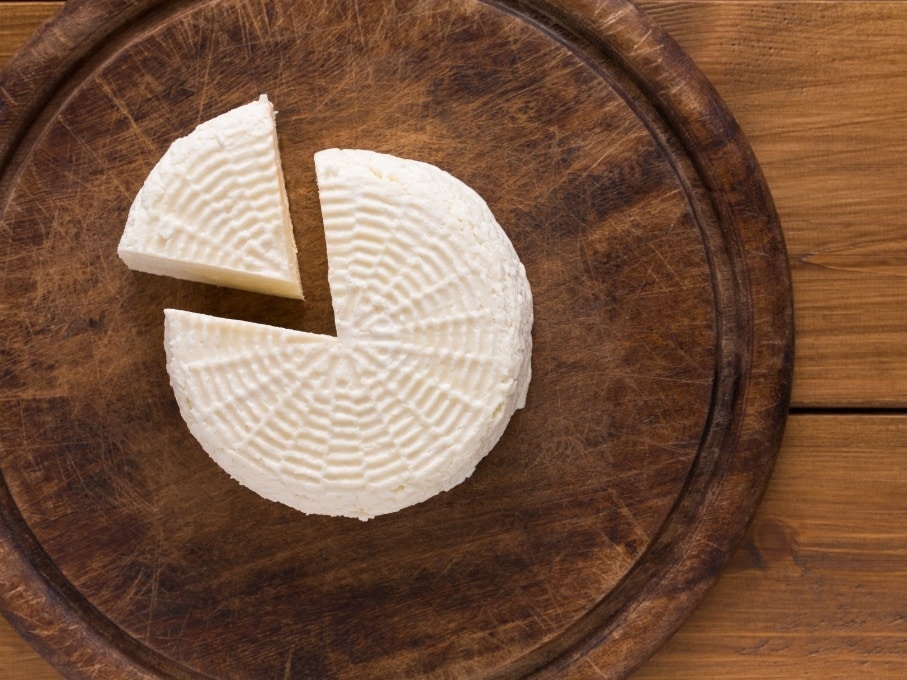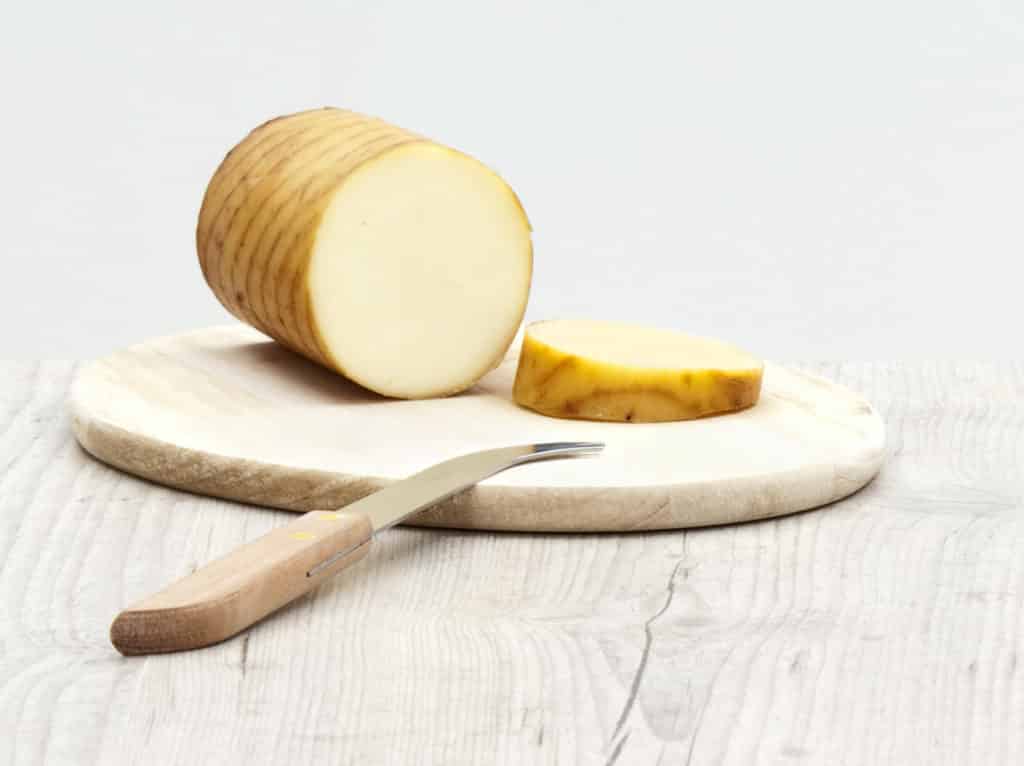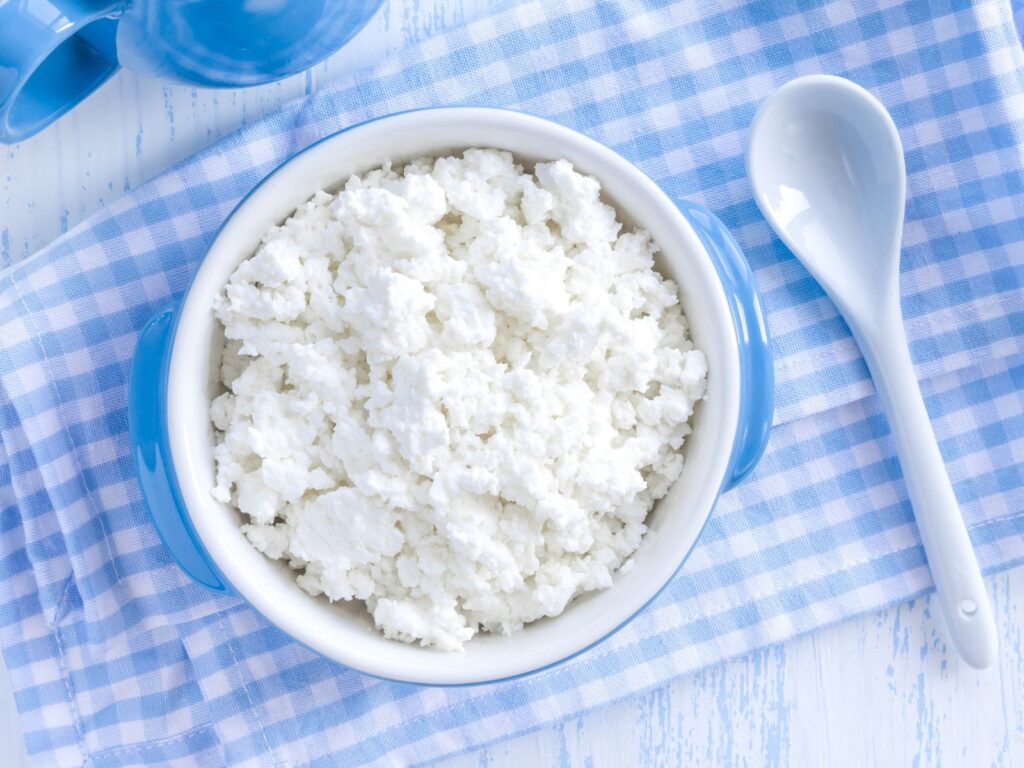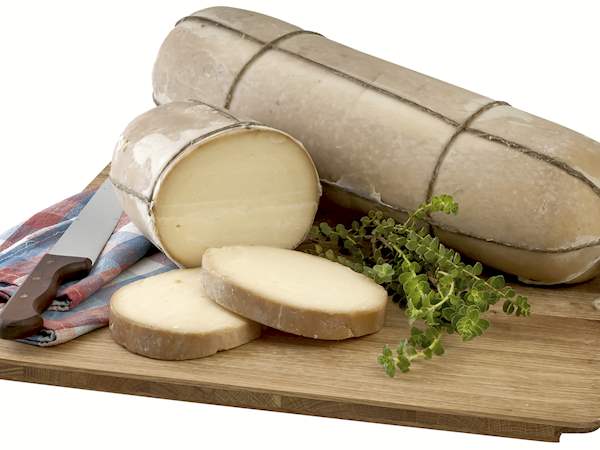Sometimes referred to as the Greek Roquefort, Kopanisti (Κοπανιστή) is a versatile Greek PDO cheese that comes from Mykonos. Read on to learn about its origins and production. And discover our tips for how to serve it.
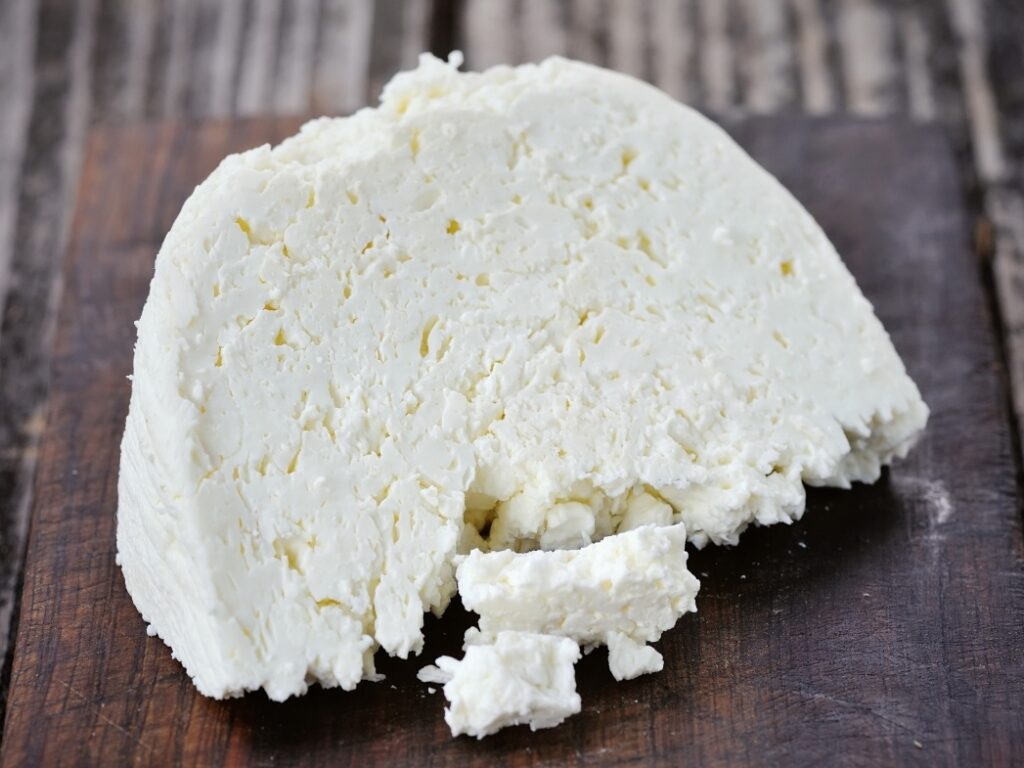
Where does Kopanisti Mykonou come from?
As its name indicates, Kopanisti Mykonou comes from the Cyclades islands of Mykonos, Syros and Tinos. This 300-year-old island cheese shows significant seasonal variations depending on the weather, temperature and milk used.
In a similar manner to most Greek PDO cheeses, Kopanisti can be made from sheep’s milk, goat’s milk or a combination of the two. In the Greek language, the word kopanisti means “beaten to separate”, which is part of the production method for this cheese.
How is Kopanisti made?
During production, the milk choice and ratio plays a significant role in the final flavour of the cheese. Indeed, it can range from sweet to sour with a buttery and soft texture. And its colour can vary from white to pale beige. Even though it has no blue mould, the locals often refer to it as the Greek Roquefort because of its spicy flavour.
How to serve Kopanisti
Even though this is clearly not a blue cheese, the locals often compare it to Roquefort due to its innate spiciness. This soft spreadable cheese is very popular in salads, sweet desserts and pies. It owes its versatility to the range of textures and flavours that various versions of Kopanisti can demonstrate. Because milk is scarce throughout the Cyclades islands, you will find it very hard to locate this cheese outside of the PDO region.
Thank you for reading
Thank you for reading this post about yet another amazing artisanal cheese. Have you tried this cheese before? Drop us a comment below with your thoughts.
If you enjoy learning about new cheeses, you can subscribe to our newsletter below. You will hear from us about once a week as we share new cheese profiles with you.
Finally, keep scrolling to find some more cheeses and recipes that have been recommended for you. Keep it cheesy!
